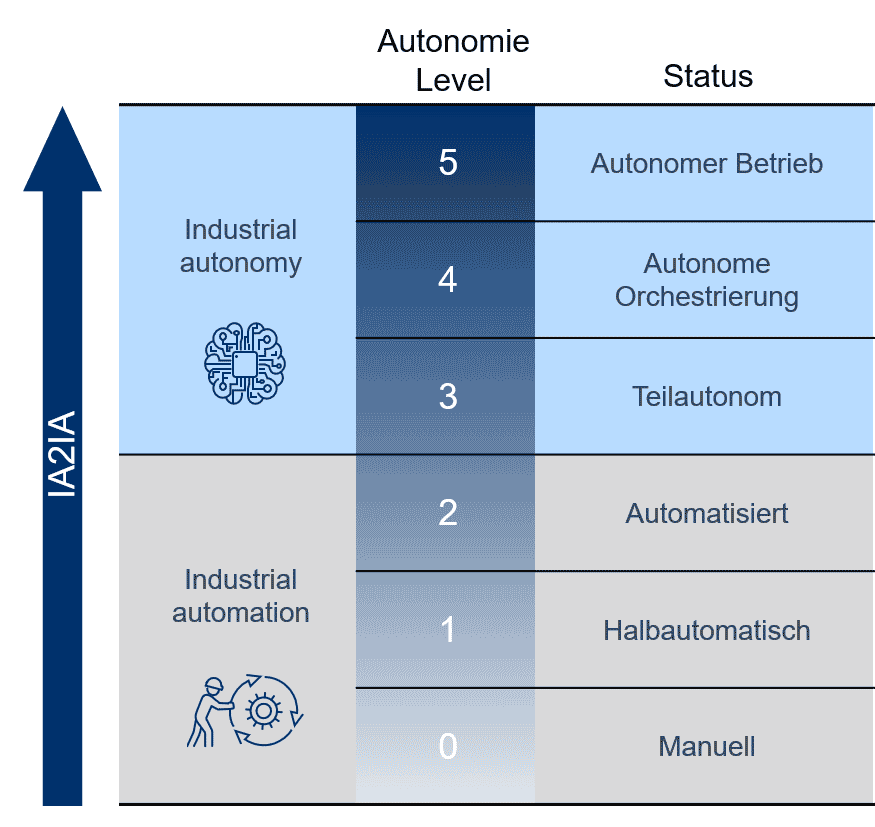Have you already discussed questions from the previous article with colleagues? Will we see the autonomous process plant shortly? Or will AI solutions outside of automation successively supplement basic automation?
In any case, one thing is already certain: direct entry into autonomous operation is very difficult to realise. This is why Yokogawa defines a step-by-step approach to autonomous operations.
Level 0-1: manual/semi-automatic
A plant is minimally instrumented and automated. Many operations are performed manually with paper-based instructions and records. The control system performs some of the production processes to eliminate error-prone operations and improve productivity.
Level 2: automated
The human being is responsible for safe operation. They are supported in this by traditional control systems. The control system performs most of the production processes and assists with workflows and maintenance tasks. However, human supervision and intervention are needed to handle anything outside normal operation correctly.
Level 3: semi-autonomous
It is characterised by a mix of autonomous components and automated systems with human orchestration. An autonomous component differs from automation in its learning, adaptation and self-optimisation capabilities for situations that are not pre-programmed. Companies at this level deploy a range of selective autonomous components or applications – with humans providing the appropriate orchestration.
 Level 4: autonomous orchestration
Level 4: autonomous orchestration
Most subsystems operate autonomously and are synchronised to optimise production, safety and maintenance under specific circumstances or conditions. It brings together autonomous components with appropriate functionality to function as a system.
However, many tasks still require a human – as not all disciplines are integrated at this level. If the specific circumstances are not met, operators must take control of the operation.
Level 5: autonomous operation
A highly idealised state in which the plant, including all orchestrated subsystems, operates autonomously, requiring no human interaction.
Overcoming major hurdles
Yokogawa envisages an additional level of ‘symbiotic autonomy’ above the operation of a process plant. This circumstance implies greater collaboration between different industries and ecosystems.
In ‘symbiotic autonomy’, the autonomous operations of several cooperating plants are brought together for a view across the entire value chain and to think outside the box. This achieves autonomous interaction of data and resources between individual plants and, in the best case, value chains.
The progress towards industrial autonomy cannot be stopped and will benefit the value chain in many areas. These include improvements in process productivity, availability and safety. Such a situation also includes improved cyber security, which is achieved by providing solutions with integrated functions. Besides this, better visibility before and after production also solves problems within the supply chain.
Closed raw material cycles
In a world that’s expecting companies to view their business from the perspective of sustainability and the conservation of Earth’s resources, symbiotic autonomy will overcome significant hurdles. A consistent flow of heterogeneous data must be processed for a functioning circular economy in the life cycle and usage statistics. A high level of information transparency along the value chain or value networks is needed to provide the algorithms with life cycle data. Symbiotic autonomy holds the opportunity to continually adapt the processes in all life cycle situations to the demands of a circular economy. Admittedly, this sounds like a distant goal – perhaps even fiction, but only if we start to follow the path from industrial automation to industrial autonomy, do we have the chance to get closer to this target.
‘You can’t see into the future, but you can lay the foundation for something futuristic – because the future can be built.’
Antoine de Saint-Exupéry
Join us here on this blog to find out more about digital transformation issues in the process industry.





